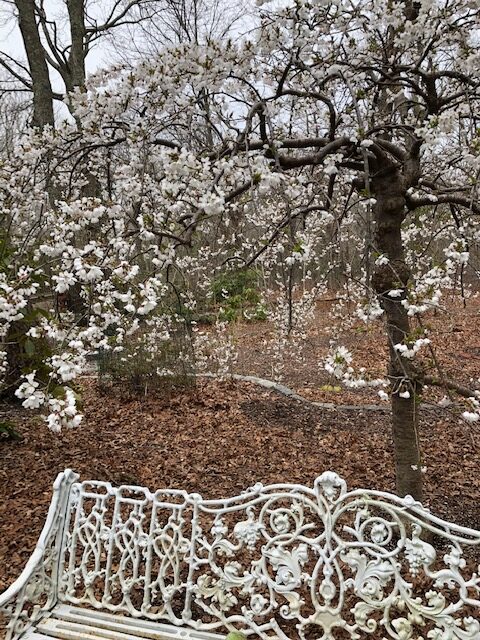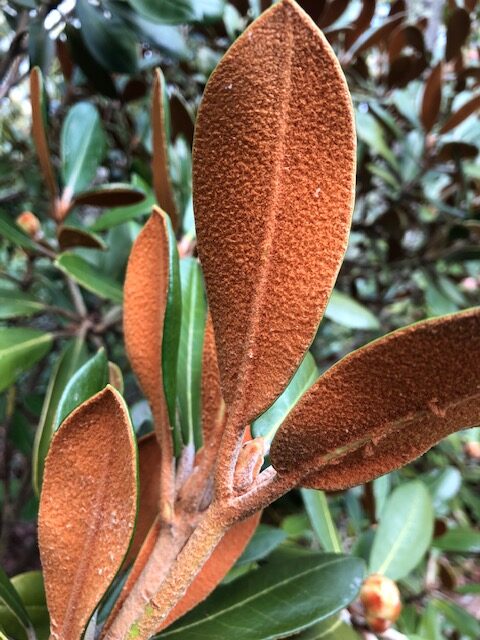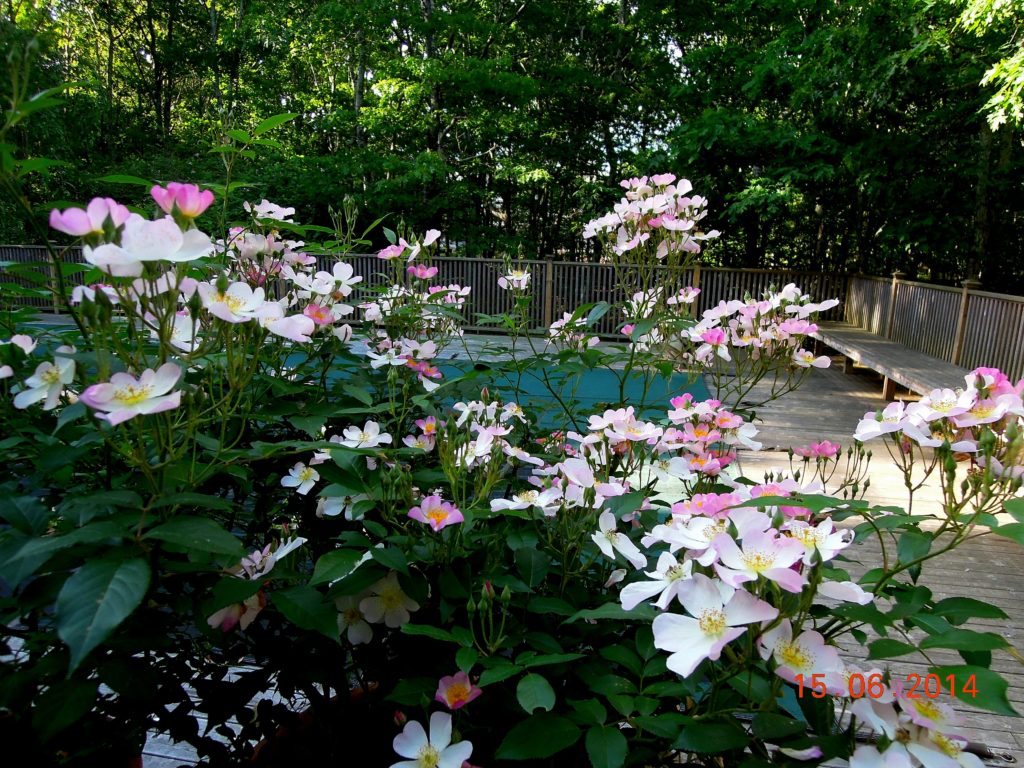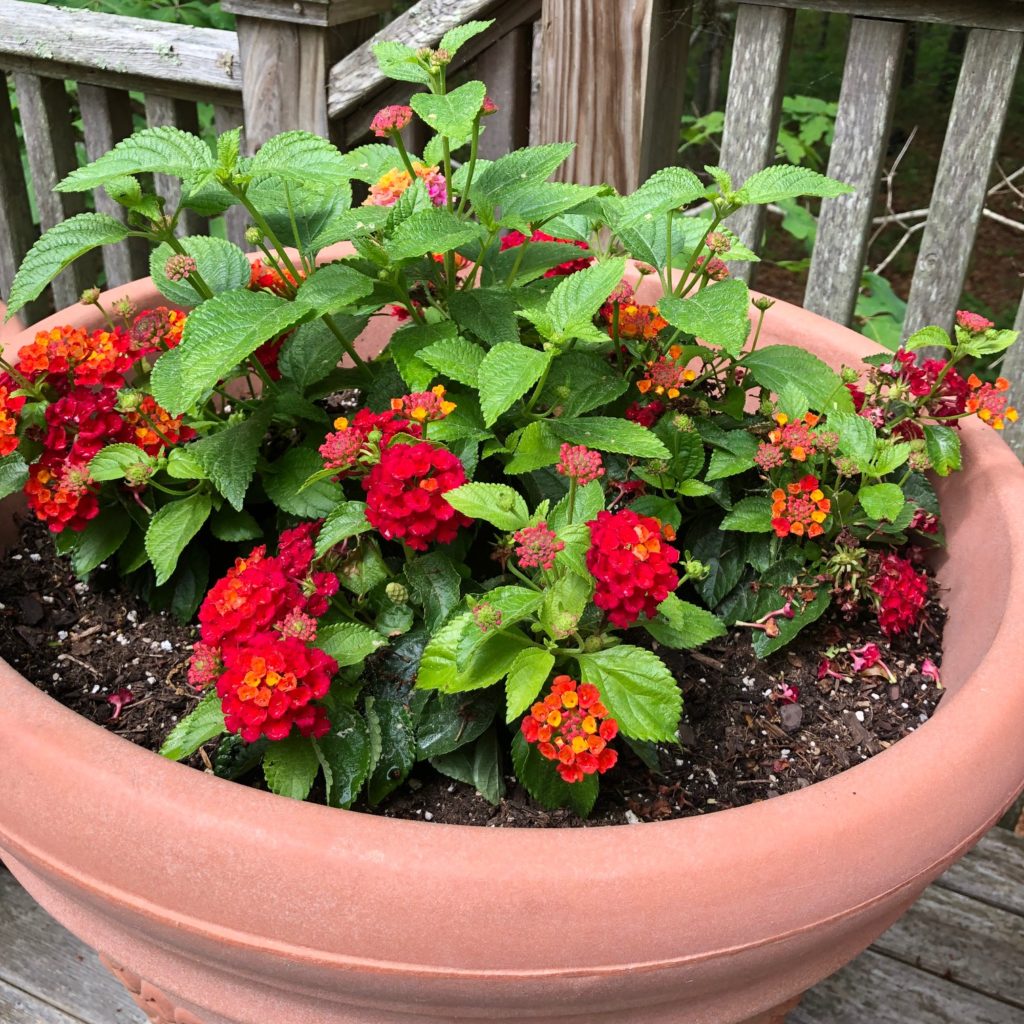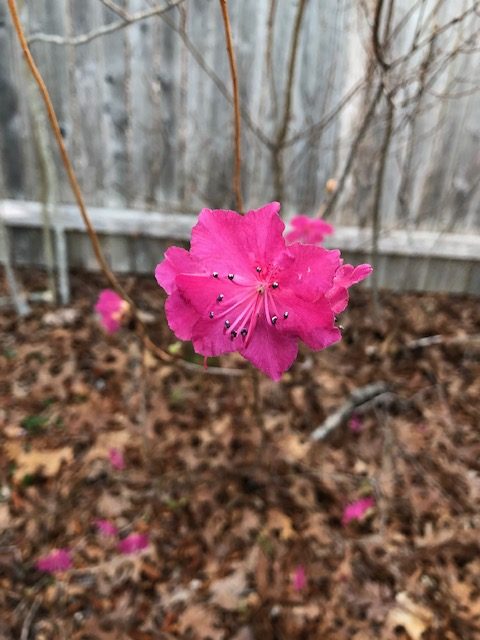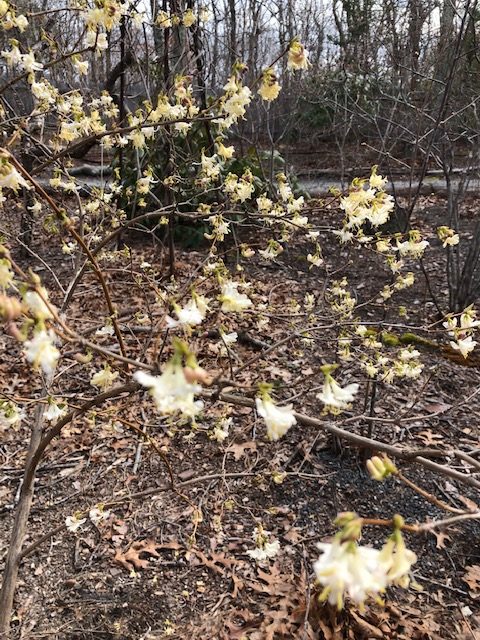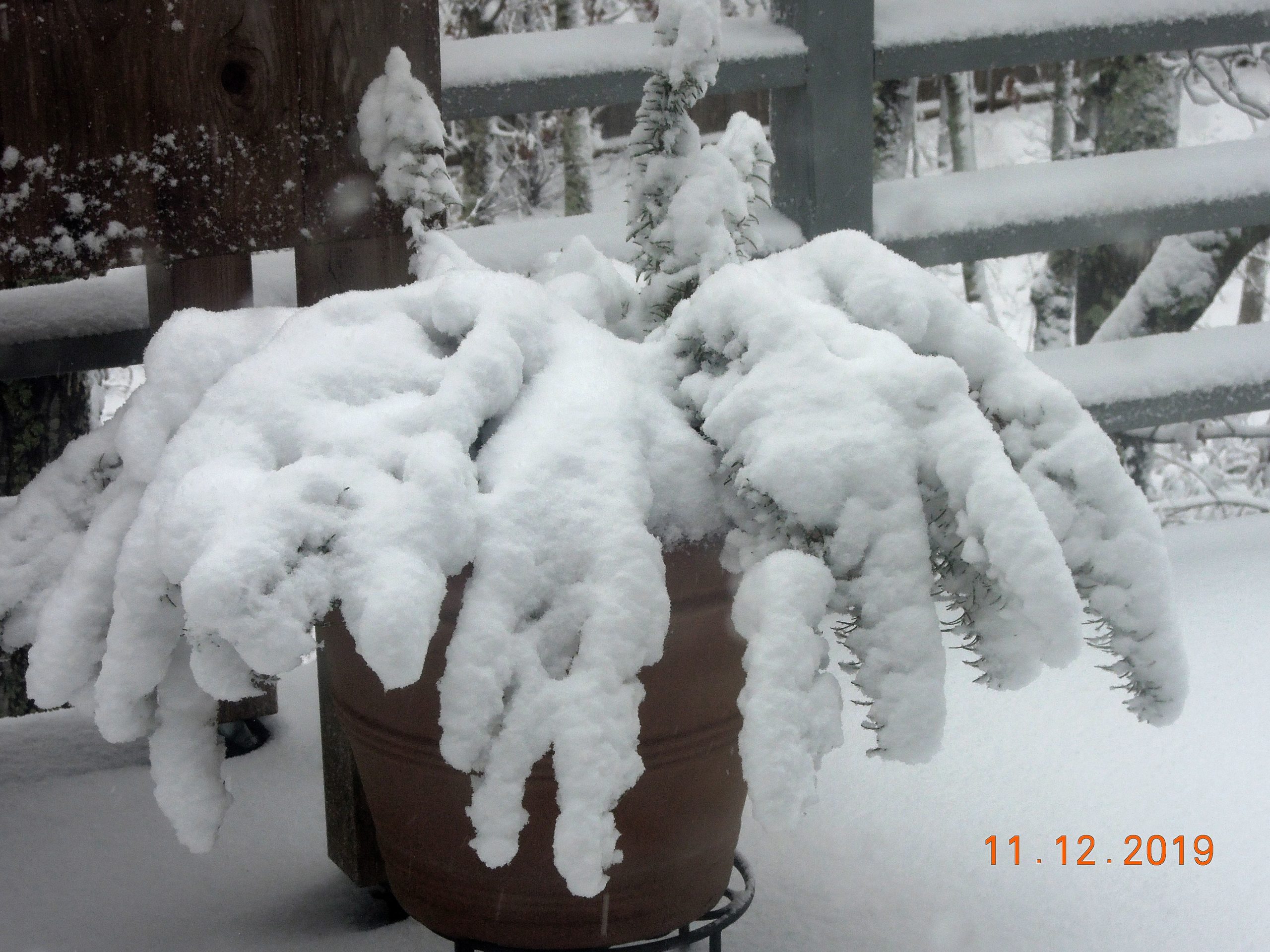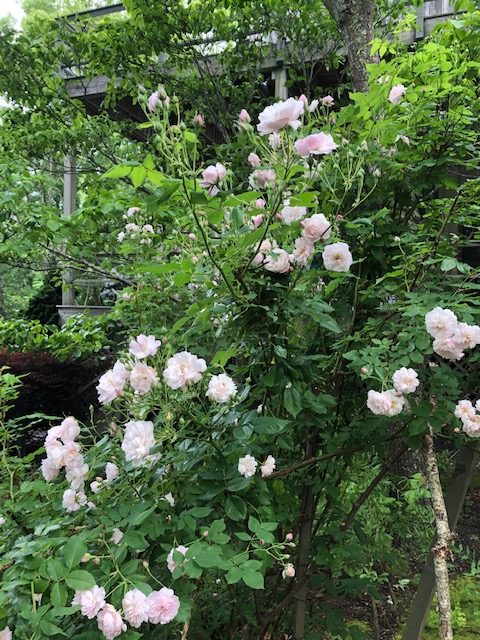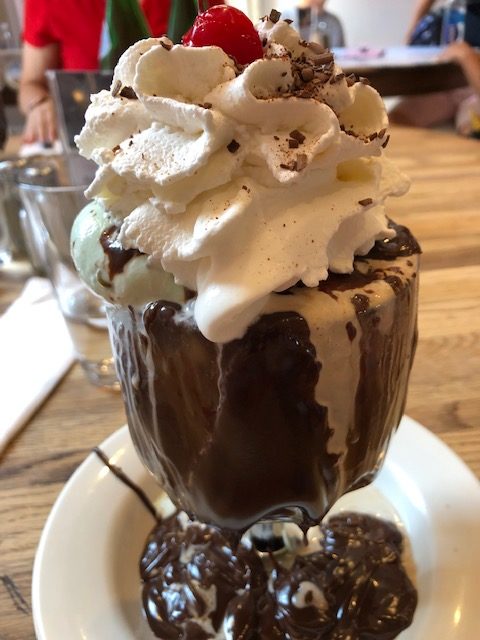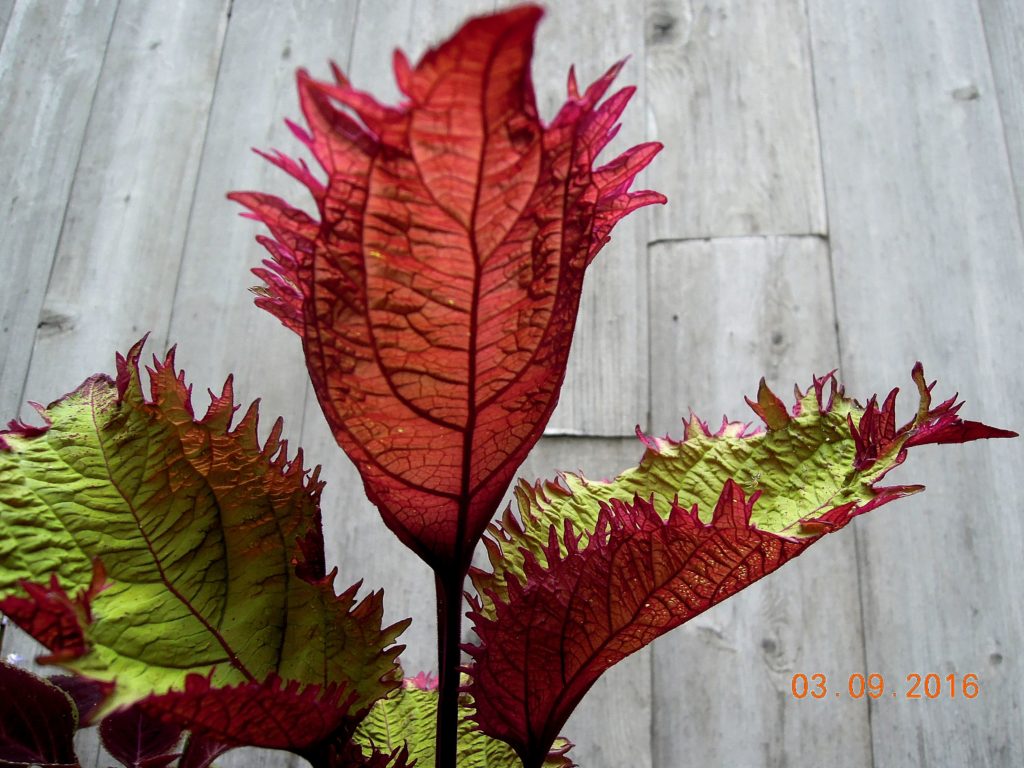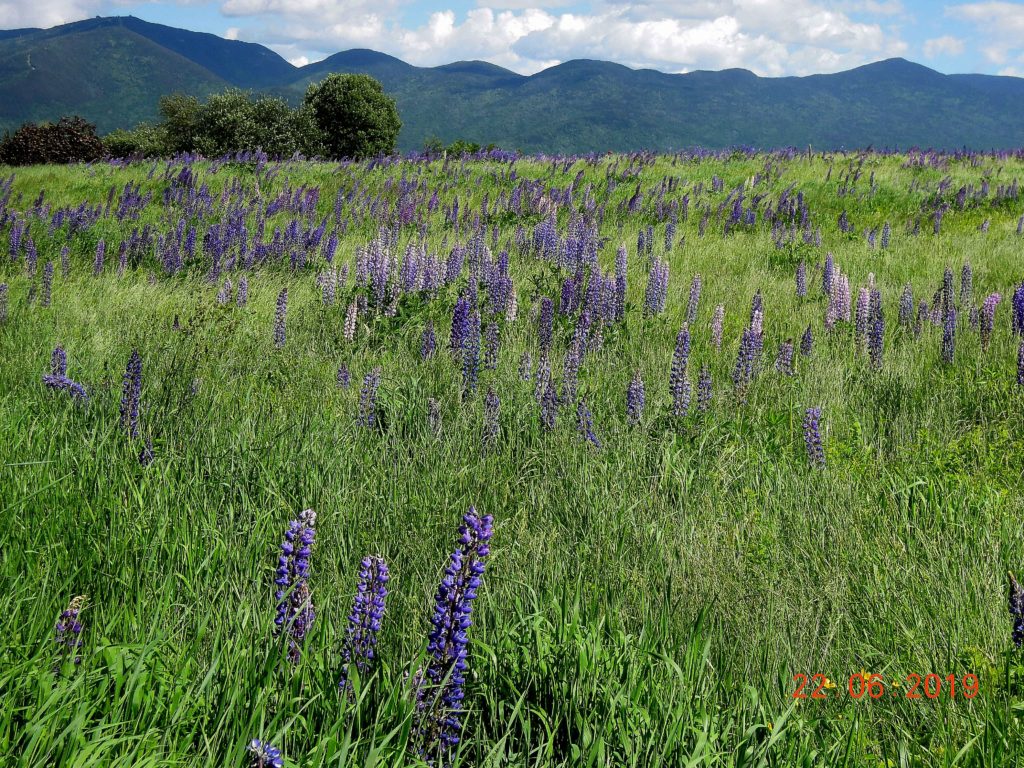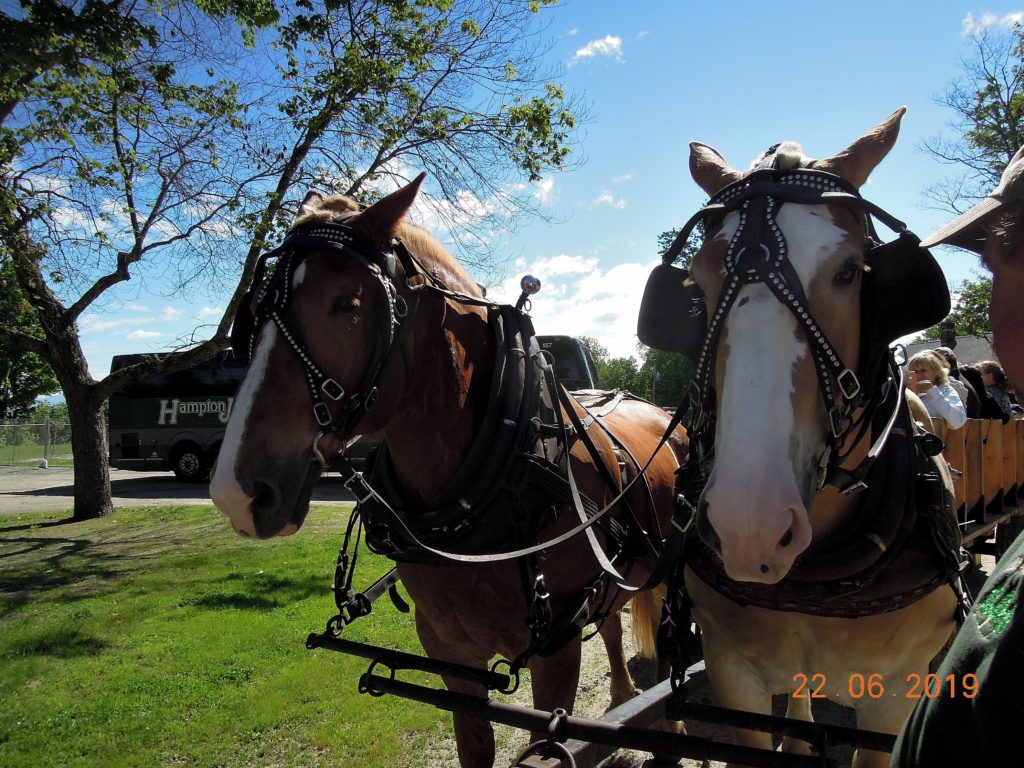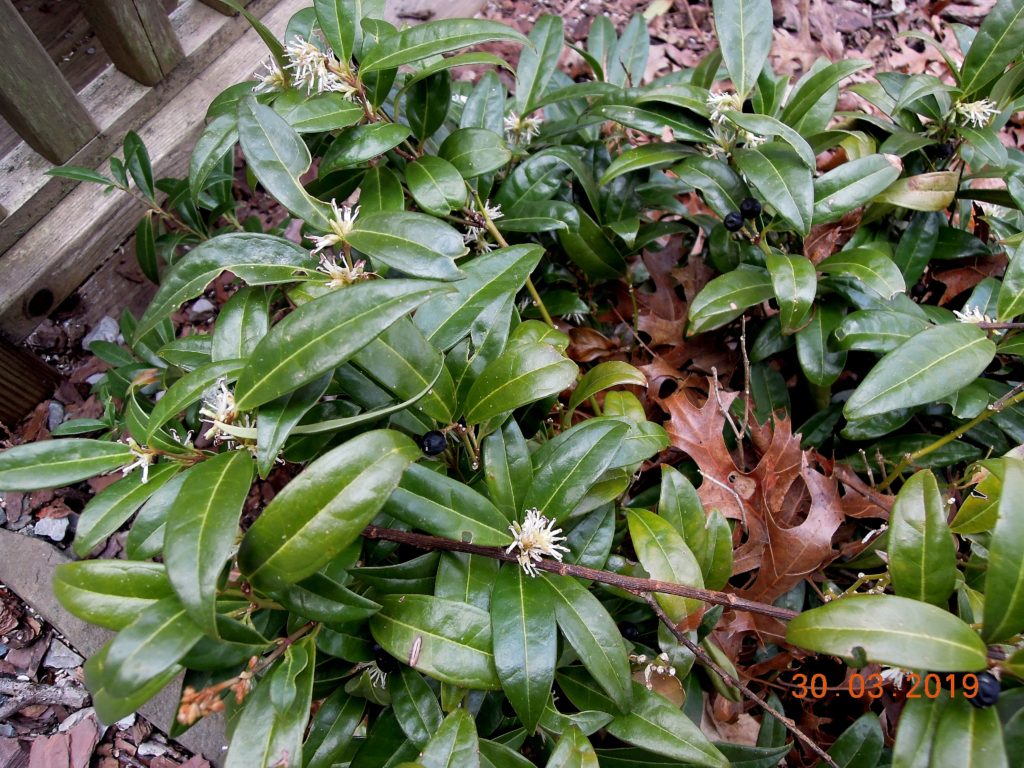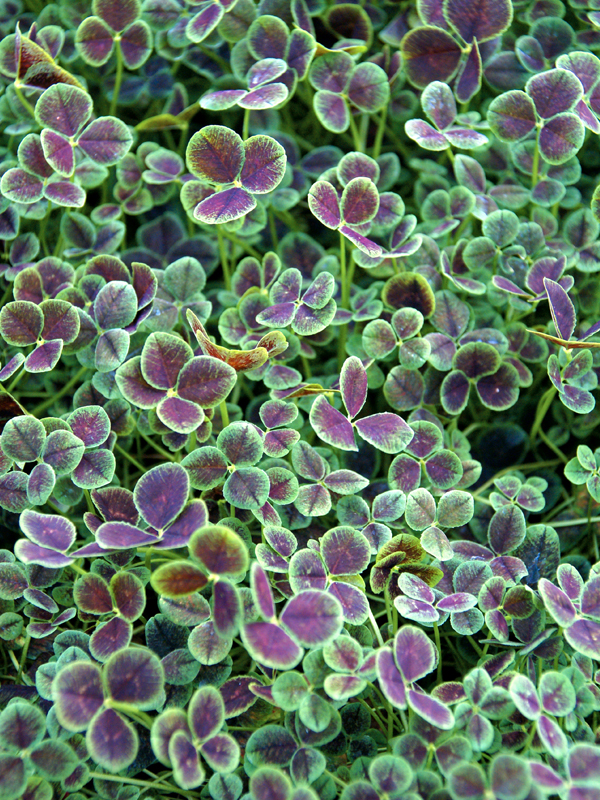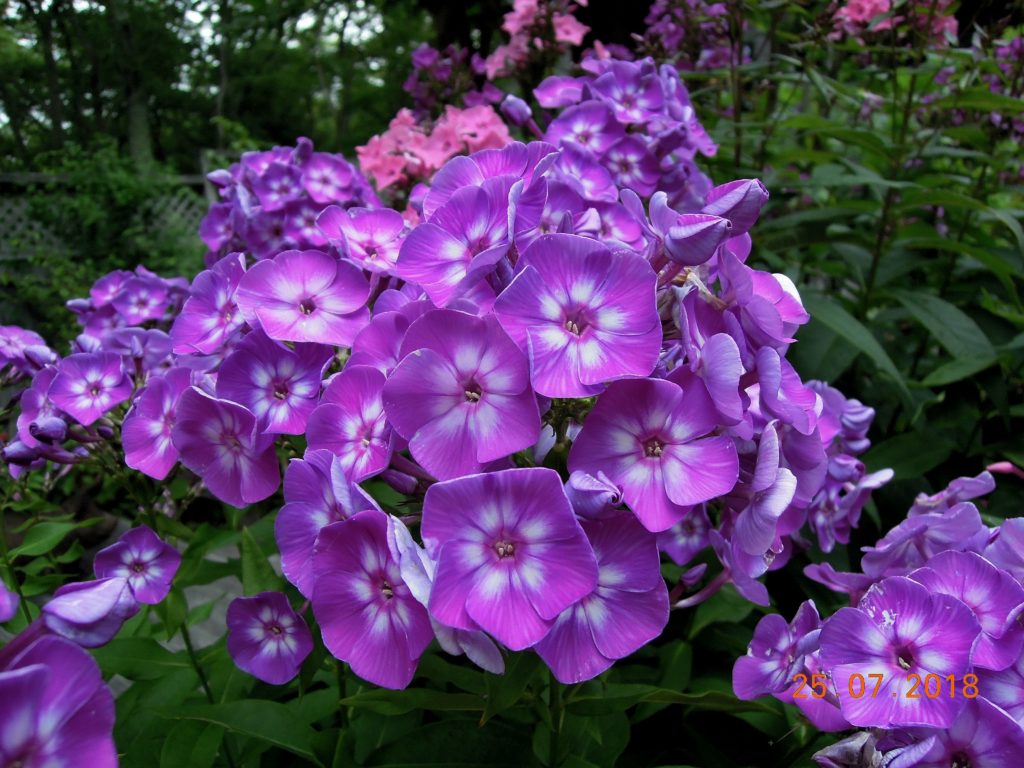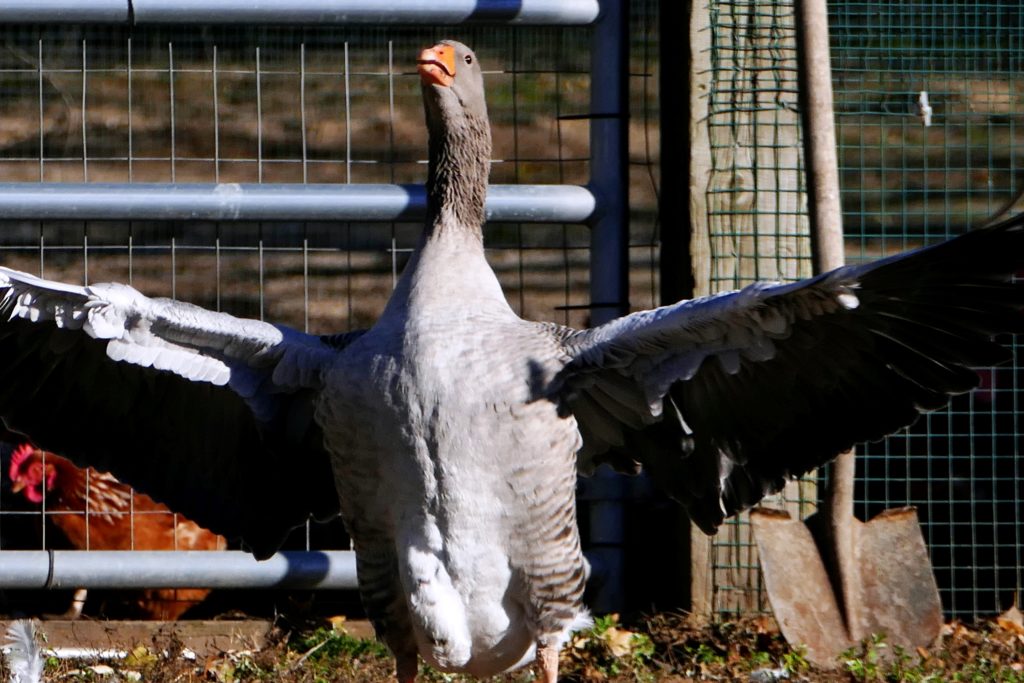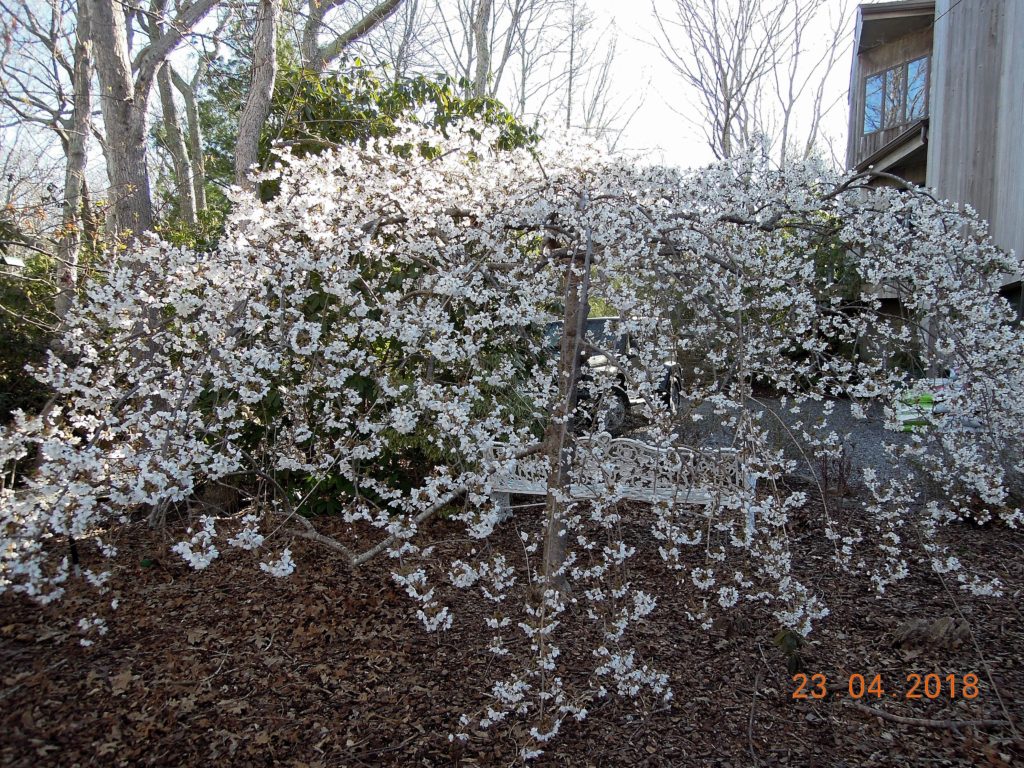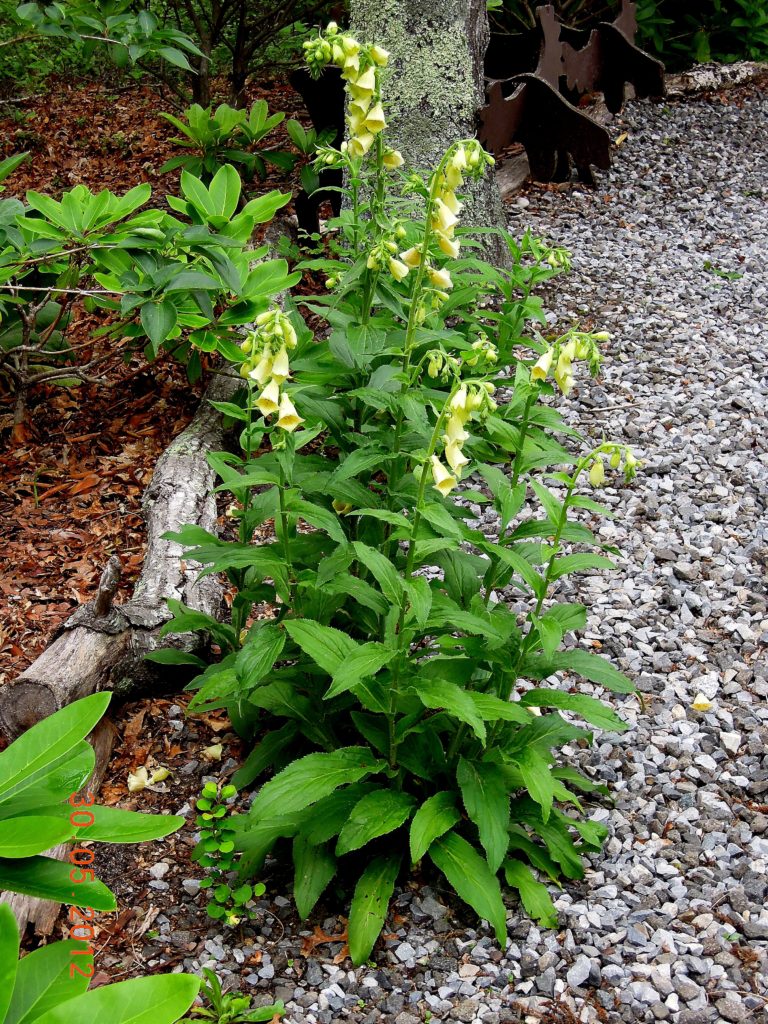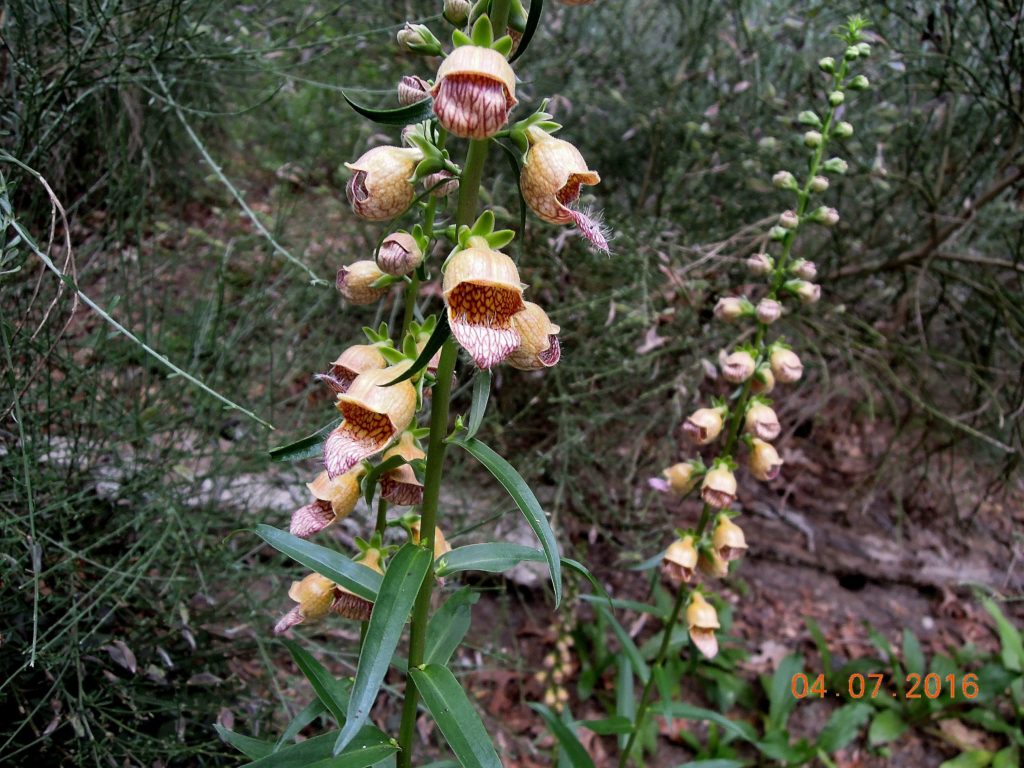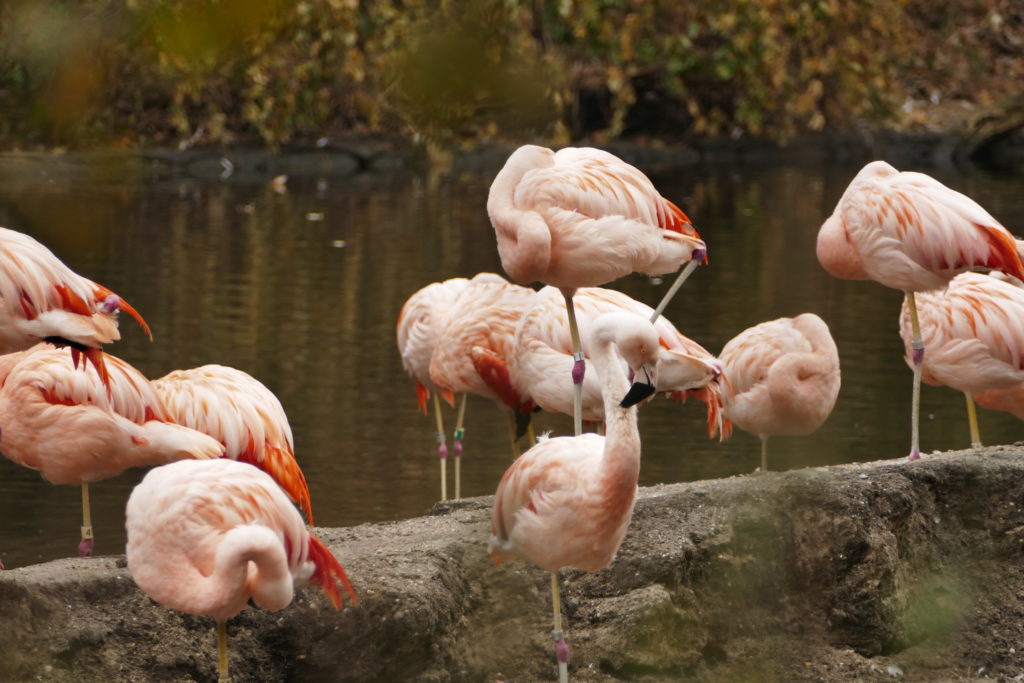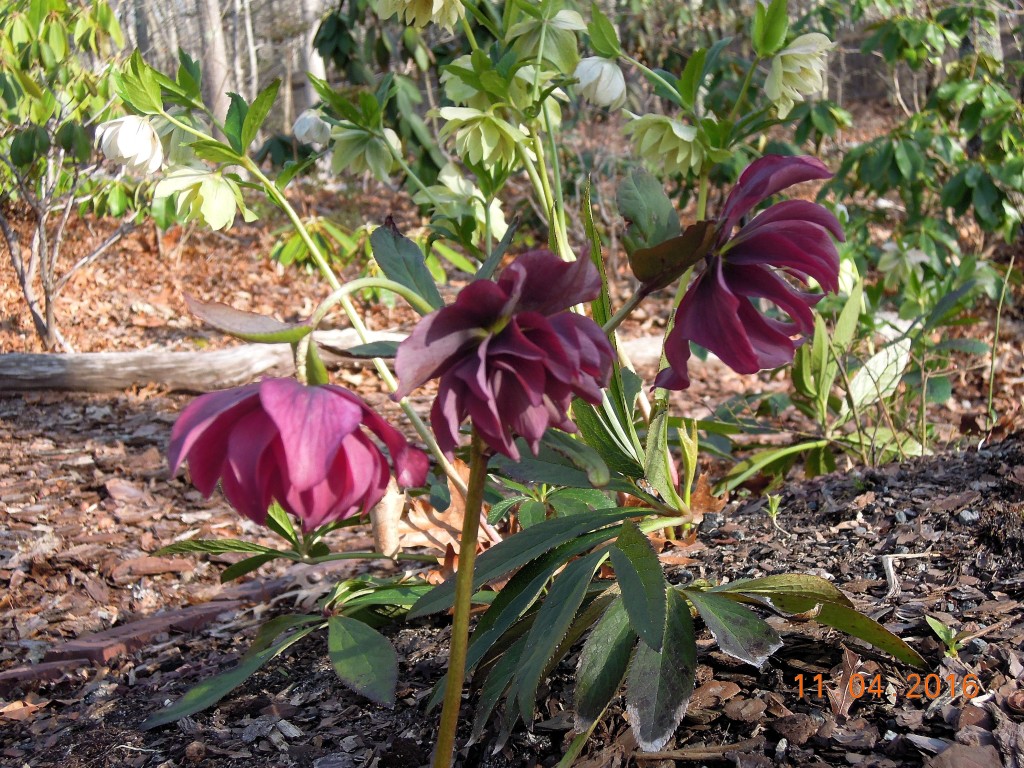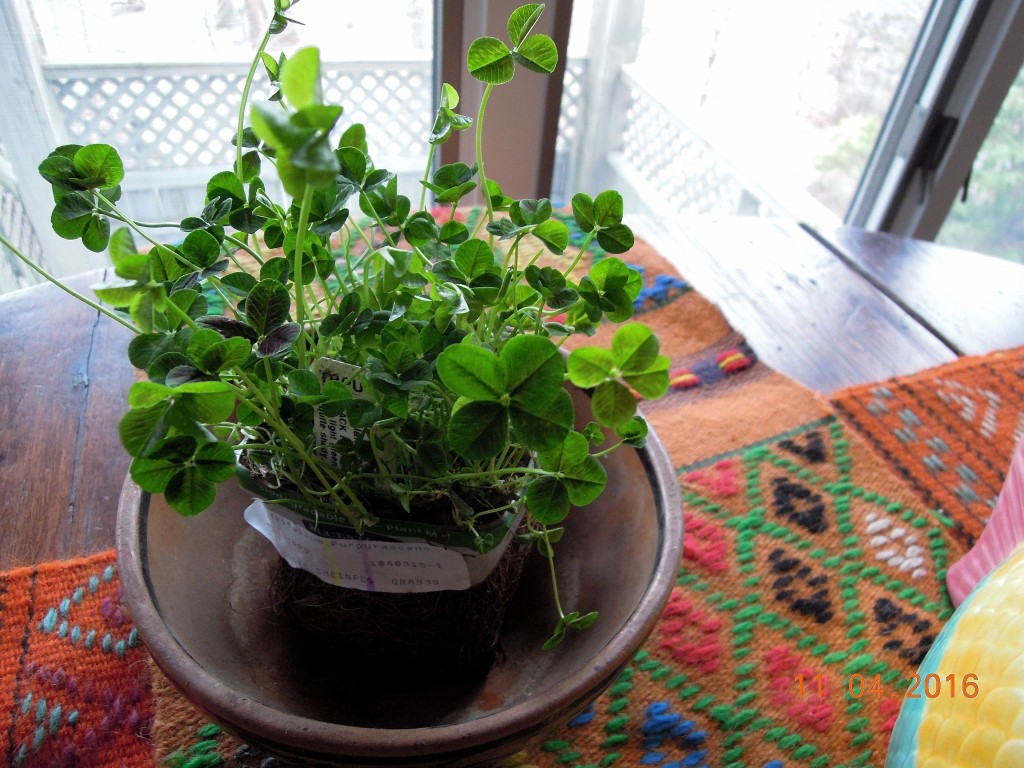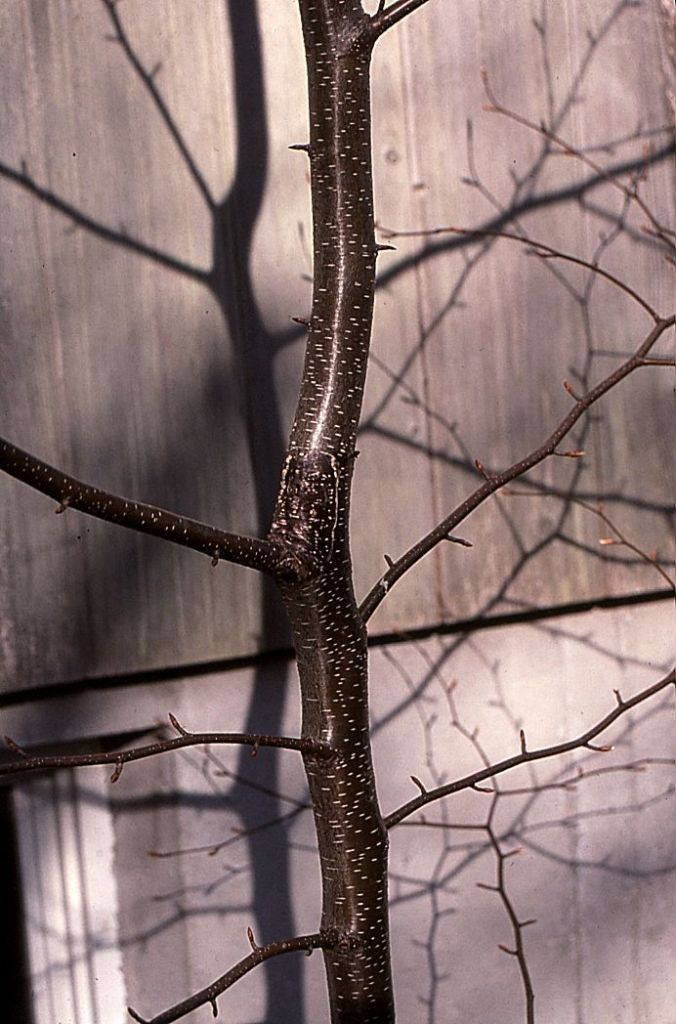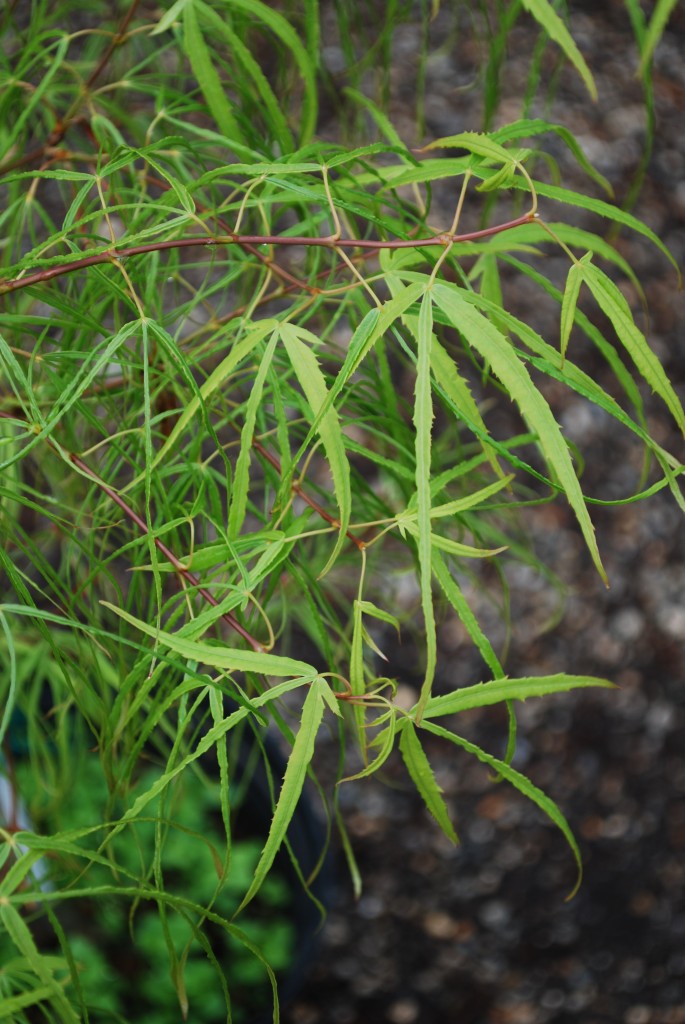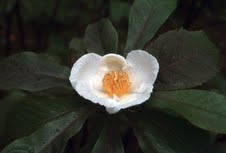“These are long golden days…full of expectation…orchards are billowy with bloom, and unnumbered birds sing their thrilling songs….It is a time of flourishing well-being.” Louise Beebe Wilder.
Spring is a special time in my garden. Dazzling plants of enduring merit abound, like the snowy-white flowering cherry tree Prunus ‘Snow Fountain’ pictured above, and the deliciously fragrant, flowering hedge of Skimmia japonica pictured below. These plants, and others, have graced my Spring garden for many years.
In this post, I will talk about and recommend three outstanding Spring-flowering bulbs, new additions to the garden:
Tazetta Narcissi ‘Avalanche’ (Seventeen Sisters) Z6-9.
According to an ancient saying: “He that hath two cakes of bread, let him sell one of them and buy Narcissus, for bread is food for the body but Narcissus is food for the soul.” I’m wild about Avalanche, a fragrant, luminous, 1906 heirloom Narcissus. I wrote about these bulbs in a recent post when they started to push growth in December and I feared they would be zapped by frost. Yet, after I dumped unfinished compost on the unseasonable new growth, the robust bulbs bloomed profusely in April. Avalanche happily hangs out with He-Haw the donkey in the garden bed next to the front steps of the house. Perfect placement for constant viewing and admiration.
Giant Darwin Hybrid Tulip ‘Akebono’ Z 3-7
While it is still early days, I think Akebono is the biggest success of the season. I planted ten tulip bulbs — Big Mac for voles — and ten came up; 100 percent vole-repellent success! (See blog post “2022: Natural, Non-Toxic, Vole Repellent.”) Akebono has huge, fragrant, primrose-yellow flowers edged in red — with occasional red striations as in the photo above. Giant Darwin Hybrids are sometimes called perennial tulips because they are likely to return for multiple years. And Akebono releases its sweet fragrance on the air, perfuming the garden. A bulb I never want to be without.
Hyacinthoides hispanica ‘Excelsior’ Z 3-8
I was seduced by the astonishing beauty of this rodent-resistant, naturalizing, 1906 heirloom Spanish Bluebell bulb. I saw its picture in a 2023 Newsletter and ordered fifty bulbs. (See blog post “Summer 2023: Resplendent Plants”.) I planted the bulbs under oak trees in a wooded, shady area of the property. In May, every bulb flowered. A joy to behold! I visit with them every day.
My go-to source for mail order bulbs is John Scheepers in Connecticut; www.johnscheepers.com; Phone: 860-567-0838.
A Scylla/Charybdis Choice
I’m in the throes of a dilemma. My beloved thirty year old, handsome, evergreen shrub, Rhododendron bureavii, has grown four feet into our narrow driveway, an intrusion causing all sorts of havoc with vehicles and drivers. Photo below.
I’d like to move the shrub out of harm’s way but it is risky with such a huge, established plant. This is an uncommon, very special Rhododendron variety and I don’t want to lose it. R. bureavii’s new growth is covered in brown tormentum; the undersides of its leaves are covered in orange velvet indumentum; and it produces beautiful May flowers. Photos below.
The alternative to moving the shrub would be to prune the offending stems. But in this case it would be more like a mutilation.
A Rhododendron guru was consulted and asked whether it would be better to move the plant or prune the plant.
He responded: “Move the driveway!”
(As of the date of this post, no action taken.)
Finally, as we madly plunge into the 2024 gardening year, consider this wise counsel:
“Love your garden and work in it and let it give you what it surely will of sweetness, health, and content, and let no one feel that the benefit is all on the side of the garden, for truly you will receive more than you give, no matter how faithfully you work, and you will soon find yourself more dependent upon your garden than your garden upon you.” Louise Beebe Wilder, My Garden (Doubleday, Page & Company, 1916)
